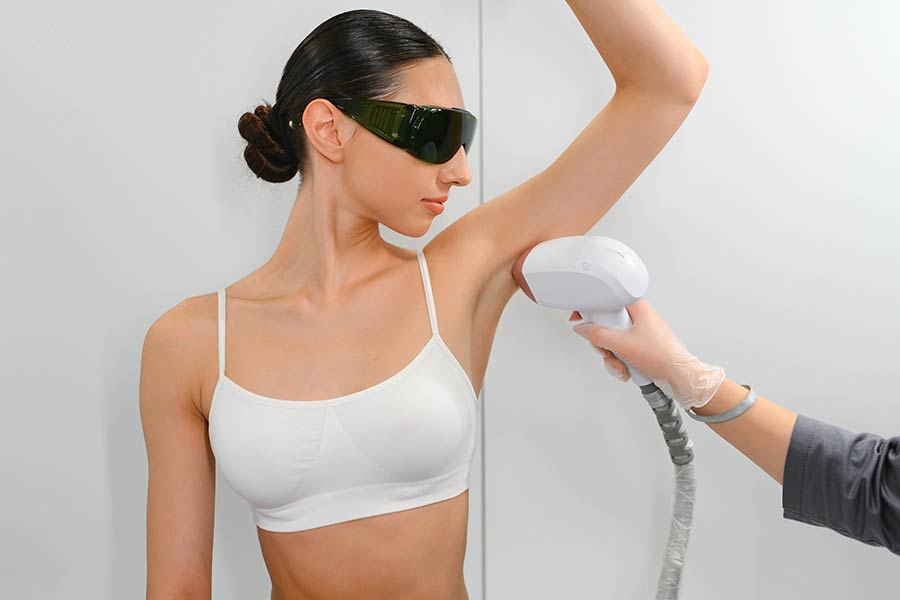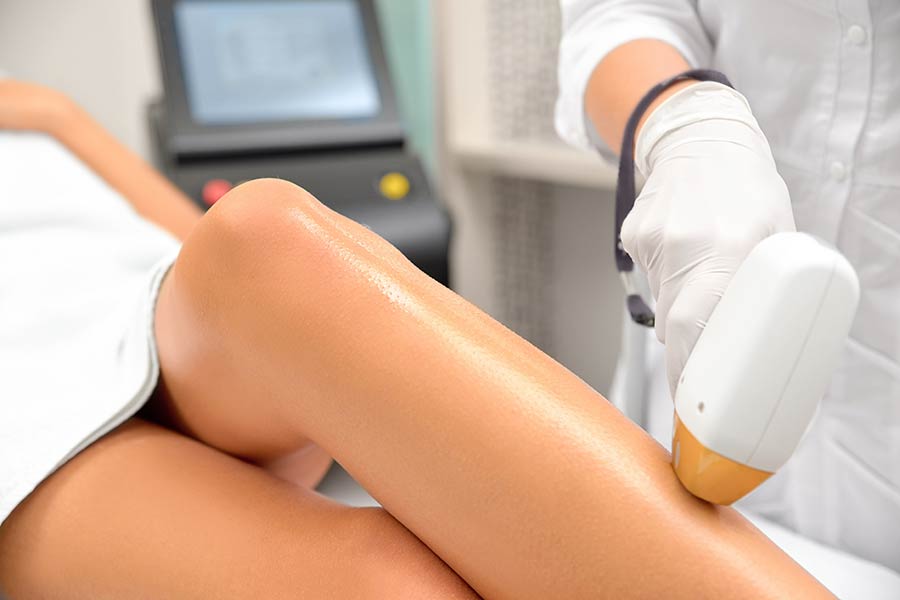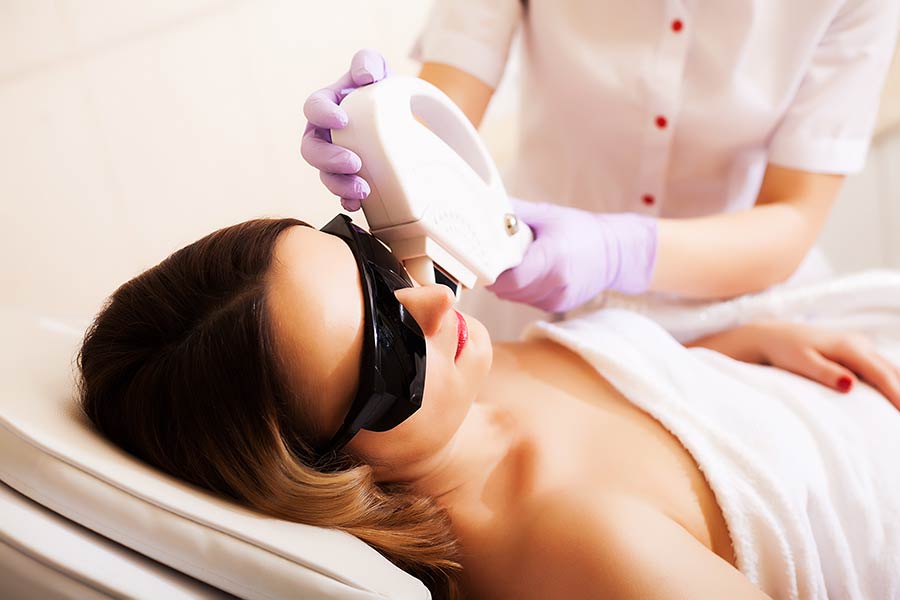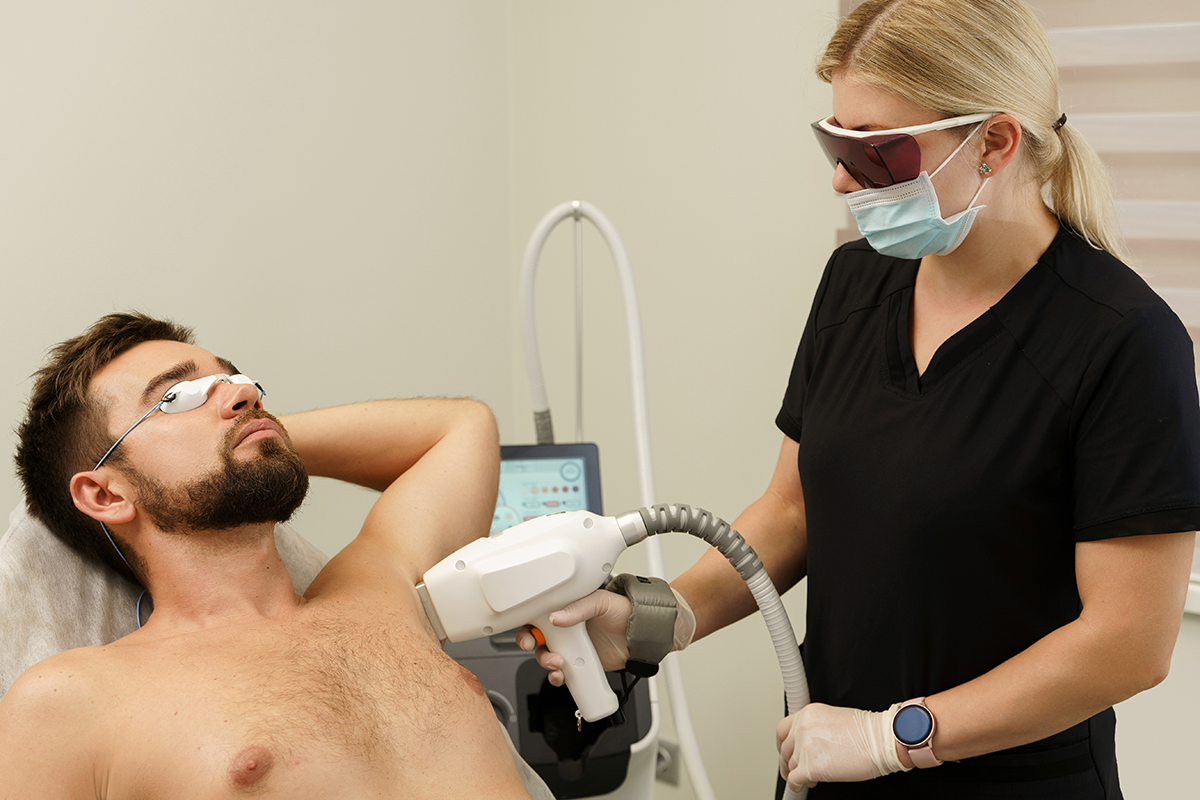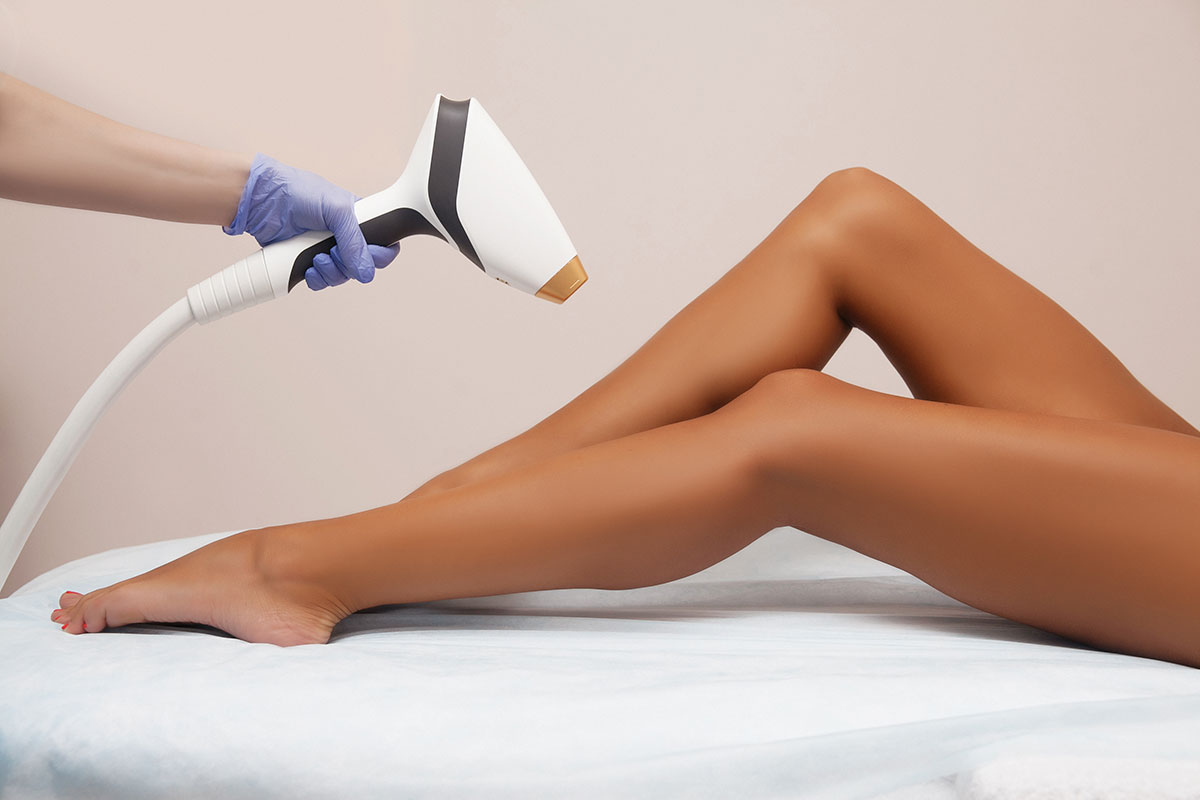Gone are the days when removing unwanted hair meant enduring endless cycles of shaving or waxing. Enter the era of laser hair removal machines, a game-changer in personal grooming that promises long-lasting smoothness without the nicks and bumps. While traditional methods offer temporary solutions, these high-tech devices aim to reduce hair growth over time, making them a smart investment for those seeking a more permanent fix. But with a market flooded with options, finding the right one can feel like searching for a needle in a haystack. This post will guide you through the maze of choices to help you land on the perfect laser hair removal machine for your needs.
Key Takeaways
- Laser hair removal technology has evolved significantly, making it more effective and accessible for both professional and at-home use.
- Understanding different laser types is crucial for choosing the right machine that suits your specific skin and hair type needs.
- When selecting a laser hair removal machine, consider key features such as wavelength, power output, cooling mechanisms, and ease of use.
- The effectiveness and efficiency of a machine are important; look for devices with proven track records and positive user reviews to ensure quality results.
- Safety should be a top priority; opt for machines that are FDA-approved and suitable for your skin type to minimize risks and ensure comfort during treatments.
- Staying informed about the latest innovations and industry trends can help consumers make educated decisions about the best laser hair removal options available.
Evolution of Laser Technology
Early Beginnings
Laser hair removal technology was a game-changer when it first appeared. In the 1960s, scientists discovered how lasers could target hair follicles. This marked the birth of laser hair removal. The early machines were big, slow, and often painful. They were not as effective as today's models.
Over time, these devices evolved significantly. Key breakthroughs included the development of lasers that could more precisely target hair while minimizing damage to surrounding skin. This evolution made treatments safer and more comfortable for patients.
Recent Advancements
In recent years, there have been major improvements in both the efficiency and safety of laser hair removal machines. New types of lasers, like the diode and alexandrite lasers, offer benefits such as shorter treatment times and effectiveness on a wider range of skin tones.
Technological innovations have also improved the user experience. Features like cooling systems now make treatments almost painless. Advanced sensors adjust laser intensity in real-time to match individual skin types, making procedures safer.
Future Prospects
Looking ahead, the future of laser technology in hair removal seems promising. Researchers are focusing on making these machines even more inclusive. They aim to develop lasers that work well on all skin types without risk of burns or pigmentation changes.
Ongoing research is likely to lead to new breakthroughs. These may include even more efficient lasers that can remove hair permanently in fewer sessions. There's also a growing focus on portable devices for home use, offering convenience and privacy.
Understanding Laser Types
Alexandrite Lasers
Alexandrite lasers operate at a specific wavelength of 755 nm. This makes them highly effective on lighter skin tones. They can target the melanin in hair efficiently without damaging surrounding skin. Their large spot size allows for the treatment of bigger areas quickly.
Many people choose Alexandrite lasers for their speed. They make hair removal sessions both quick and efficient. This has made them very popular, especially for those seeking fast results.
Diode Lasers
Diode lasers are known for their versatility across different skin types. They strike a perfect balance between safety and efficacy, making them suitable for a wide range of individuals. The technology behind diode lasers involves a longer wavelength than Alexandrite lasers, typically around 810 nm. This allows deeper penetration into the skin with less risk of damaging the surface.
They are favored by many because they cater to various demographics. Whether you have light or moderately dark skin, diode lasers can be adjusted to suit your needs. This flexibility is one reason why they're a top choice for laser hair removal.
Nd:YAG Lasers
Nd:YAG lasers stand out due to their effectiveness on darker skin tones. With a wavelength of 1064 nm, they go deeper into the skin without affecting melanin as much as other lasers do. This makes them ideal for individuals with darker complexions who want to avoid pigmentation issues.
These lasers are also great for treating ingrown hairs and reducing skin irritation. Since they don't target the surface layers of the skin as aggressively, there's a minimal risk of skin pigmentation changes post-treatment. It's this specific characteristic that has made Nd:YAG lasers a preferred choice for those concerned about maintaining their natural skin tone while undergoing hair removal.
Key Features to Consider
Safety Mechanisms
Built-in cooling systems play a crucial role in laser hair removal machines. They protect the skin by maintaining a safe temperature during treatments. This feature is vital for preventing burns and discomfort.
Safety certifications are also key. Machines should meet international standards like FDA clearance or CE marking. These certifications ensure the device's safety and effectiveness.
Trained professionals are essential for safe procedures. They know how to use the machines correctly. Their expertise minimizes risks and ensures a smooth experience.
Compatibility
Laser machines vary in their suitability for different skin and hair types. It's important to choose the right laser for your needs. This choice affects the treatment's effectiveness.
Advancements in technology have increased compatibility with diverse users. Modern machines can now cater to a wider range of skin tones and hair colors than ever before. This inclusivity means more people can benefit from laser hair removal.
Choosing the correct laser based on your skin and hair type is crucial. It ensures effective results without damaging the skin.
User Experience
Comfort during treatment is paramount. Features that reduce pain make the process more bearable. Some machines have special tips or gel pads to lessen discomfort.
User-friendly interfaces make treatments easier to manage. They allow for personalized settings, adjusting intensity levels according to user preference and tolerance.
Settings customization enhances user experience significantly. It makes treatments more efficient and comfortable, leading to better outcomes.
Top Machines Overview
Performance Metrics
The effectiveness of a laser hair removal machine largely depends on its performance metrics. These include fluence, or energy density, pulse duration, and repetition rate. High fluence levels can target hair follicles more aggressively, making the treatment more effective. However, if not used correctly, this can also increase the risk of skin damage.
Pulse duration plays a crucial role in safety and efficacy. Short pulses are effective for fine and light hair, while longer pulses are safer for darker skin tones. The repetition rate, or how often the laser fires, affects treatment speed. Machines with adjustable settings are essential because they can be tailored to individual needs based on skin and hair types.
Unique Features
e laser hair removal machines stand out due to their unique features. For instance, several models come with integrated skin cooling features to reduce discomfort during treatment. This is particularly beneficial for those with sensitive skin.
Portable laser models have also gained popularity for at-home use. They offer convenience but usually operate at lower power levels compared to professional equipment. Certain lasers are specifically designed with particular skin and hair types in mind, ensuring safer and more effective treatments for all users.
User Feedback
User feedback is invaluable in assessing the real-world performance of laser hair removal machines. Common praises include ease of use, effectiveness after several sessions, and minimal discomfort during treatment. On the flip side, complaints often revolve around devices being less effective on certain hair or skin types and occasional skin irritation.
The importance of real-world feedback cannot be overstated as it drives technology improvement. Manufacturers rely on user experiences to guide future advancements and innovations in laser technology. This ensures that new models are not only more efficient but also safer and more comfortable to use.
Effectiveness and Efficiency
Treatment Duration
Laser hair removal machines offer a path to permanent hair reduction. Most people need between 4 to 6 sessions. This range can vary due to factors like hair color and the size of the treatment area.
Darker hair absorbs laser light better, making it quicker to treat. Larger areas, like the back or legs, take more time than smaller ones, such as the upper lip.
Newer lasers work faster. They save users significant time by covering larger areas quickly.
Success Rates
After completing their sessions, users can expect an average of 80% hair reduction. Success rates depend on several factors. These include the thickness and color of the hair being treated.
Darker, coarser hair typically responds best to laser treatments. Lighter or finer hairs might need more sessions for similar results.
Long-term studies show high satisfaction rates among users. Many report lasting effects years after treatment. Testimonials often highlight how life-changing these outcomes are.
Session Intervals
For best results, spacing sessions correctly is crucial. The recommended interval is usually 4 to 8 weeks apart.
This timing allows for treating hairs in their growth phase effectively. Intervals might vary based on individual growth cycles and the body part being treated.
Following advised intervals ensures optimal outcomes. It maximizes the effectiveness of each session.
Safety and Skin Types
FDA Approvals
Several laser hair removal machines have earned the seal of approval from the Food and Drug Administration (FDA). Notable among them are the Tria Beauty Hair Removal Laser 4X, the Silk’n Infinity, and the Philips Lumea Prestige. FDA approval is a significant indicator of a product's safety and efficacy. It means these machines have passed rigorous testing to ensure they're safe for consumer use.
The process to gain FDA approval involves multiple stages. Manufacturers must prove their devices are both safe and effective. This includes clinical trials and quality control measures. The criteria focus on ensuring that these machines do not cause harm while delivering on their promise to remove hair.
Skin Tone Adaptability
Recent years have seen remarkable advancements in laser technology. These improvements now allow for the safe treatment of a wider range of skin tones. Early laser models were limited in their effectiveness, primarily working best on people with light skin tones and dark hair. Now, thanks to innovations like Nd:YAG lasers and diode lasers, individuals with darker skin can also achieve excellent results without risking skin damage.
Choosing the right laser type for one’s skin tone is crucial. Different lasers interact with skin pigment in varied ways. For instance, Alexandrite lasers are great for lighter skin, while Nd:YAG lasers work better for darker complexions. These technological innovations have significantly increased adaptability, making laser hair removal an option for nearly everyone.
Sensitivity Considerations
For those with sensitive skin, modern laser hair removal machines offer various options and settings to reduce discomfort. It's essential to conduct a patch test before undergoing full treatment. This test helps determine how one's skin reacts to the laser, ensuring safety throughout the procedure.
Manufacturers design these machines with adjustable intensity levels. They can minimize discomfort and prevent potential skin damage during treatment. This flexibility is especially beneficial for individuals prone to irritation or those with sensitive areas being treated.
Innovations in Hair Removal
Painless Procedures
Laser hair removal has evolved significantly. Technologies now focus on minimizing discomfort. Cooling mechanisms play a big part. They protect the skin by lowering its temperature before and during the laser pulse. This approach reduces the sting felt during treatment.
Numbing creams have also become popular. They are applied to the skin before the procedure, dulling any potential pain. However, pain perception varies greatly among individuals. Some may find laser treatments almost painless, thanks to these innovations, while others might still experience discomfort.
Speed Enhancements
The introduction of lasers with faster pulse rates marks a significant advancement. These devices can emit light pulses at a much quicker rate than older models. This reduces treatment time dramatically, making sessions more convenient for users.
Quick sessions benefit both users and practitioners. Users spend less time undergoing treatment, fitting it easily into busy schedules. Practitioners can see more clients in a day, increasing their efficiency and profitability.
Precision Improvements
Advancements in laser technology have greatly improved targeting accuracy. Modern machines are capable of focusing on hair follicles with pinpoint precision. This is crucial for avoiding unwanted skin damage and ensures that only the hair follicle is affected by the laser.
Precision is especially important when treating small or difficult areas like the upper lip or fingers. Improved accuracy means better results with fewer risks of side effects.
Consumer Guide
Budgeting Tips
When exploring laser hair removal machines, cost versus effectiveness is key. Look for devices within your budget that still offer high-quality results. It's not just about the initial price tag. Consider how the machine's efficiency can save money over time.
Many sellers provide financing options or package deals. These can make higher-end models more accessible. Always read the fine print to understand what you're agreeing to.
Laser hair removal offers long-term savings compared to traditional methods like waxing or shaving. The upfront cost might be higher, but it reduces the need for frequent salon visits or buying razors and creams.
Maintenance Advice
Regular maintenance checks keep your machine running smoothly. This ensures you get the best results from your investment. Don't ignore signs that something might be wrong.
For common issues, learn some simple troubleshooting tips. Many problems have easy fixes if you catch them early. Yet, don't try to repair complex issues yourself.
Professional servicing plays a crucial role in extending your machine's lifespan. Experts can spot and fix problems you might miss. This keeps your device in top condition for longer.
Warranty Importance
Buying a machine with a warranty offers peace of mind. It shows the manufacturer stands behind their product. Look for warranties that cover a significant period and include both parts and labor.
A good warranty agreement clearly states what's covered and what isn't. Understand these details before making a purchase. This ensures you know exactly what protection you have.
Warranties protect against defects and malfunctions that aren't your fault. They can save you money on repairs or replacements if something goes wrong with the machine.
Industry Trends
Eco-friendly Practices
Manufacturers have made significant strides in developing energy-efficient laser hair removal machines. These advancements not only cut down on electricity use but also reduce the carbon footprint of beauty clinics and salons.
In addition to energy efficiency, the industry is focusing on the eco-friendly disposal and recycling of outdated machines. This initiative ensures that old devices do not end up harming the environment.
They are also working hard to lessen the environmental impact during production. This involves using sustainable materials and minimizing waste. Such efforts show a commitment to protecting our planet while delivering quality products.
Portable Solutions
The demand for compact, portable laser hair removal devices has skyrocketed. People love the convenience of at-home treatments without visiting a clinic. These devices offer freedom and flexibility to users who prefer privacy or have busy schedules.
Creating effective portable devices comes with challenges, though. Manufacturers must balance size with power to ensure these gadgets are just as effective as their larger counterparts. They've succeeded by using innovative technologies that make small devices powerful.
This trend towards portability reflects a broader shift in consumer preferences towards more convenient health and beauty solutions.
AI Integration
Artificial Intelligence (AI) is set to revolutionize how we approach laser hair removal. It can customize treatment plans based on individual needs, making procedures more effective.
Currently, AI helps analyze skin and hair types, ensuring that treatments are safe for all users. This technology makes it easier for machines to adapt to different individuals, enhancing both safety and efficacy.
The potential for AI in this field is immense. It promises not only improved results but also higher user satisfaction by tailoring treatments to each person's unique characteristics.
Final Remarks
Navigating the world of laser hair removal machines might seem like trekking through a tech jungle, but you've got the map now. From the evolution of laser technology to the latest industry trends, we've covered the ground. You know your Alexandrite from your Nd:YAG, what bells and whistles matter, and how to pick a machine that won’t turn your salon into a scene from a sci-fi movie gone wrong. Safety isn't just a buzzword; it's crucial for you and your clients' skin types. And with innovations popping up faster than unwanted hair, staying informed means you're always ahead.
hat's next? Dive in. Choose the best laser hair removal machine that fits your needs and those of your clientele. Remember, this isn't just about zapping hairs; it's about boosting confidence, one smooth skin at a time. Let's make hairy history together.
Frequently Asked Questions
What types of laser hair removal machines are there?
There are mainly three types: Alexandrite, Diode, and Nd:YAG. Each works a bit differently, like choosing between a sports car, an SUV, and a sedan for different driving experiences.
How do I choose the right laser hair removal machine?
Consider your skin type, hair color, and the area you're targeting. It's like picking shoes for an outfit; what works best depends on the occasion (or in this case, your personal attributes).
Are laser hair removal machines safe for all skin types?
Mostly, yes. Innovations have made them safer for a broader range of skin types than before. Think of it as sunscreen - initially designed for lighter skins but now available for everyone.
How effective is laser hair removal?
It's highly effective with multiple sessions. Imagine erasing a pencil drawing; it gets lighter with each pass until it's barely visible.
Can innovations in laser technology lead to better hair removal results?
Absolutely! It’s like upgrading from a flip phone to a smartphone; newer models offer more features and better performance.
What should I look for in a consumer guide on laser hair removal machines?
Focus on safety features, effectiveness on various skin/hair types, and user reviews. It's like reading restaurant reviews before dining out; you want the best experience based on others' encounters.
Are there any new trends in the laser hair removal industry?
Yes, trends include portable home devices and machines tailored for specific skin and hair types. Picture it as fashion trends; what’s hot changes but always aims to cater to diverse needs.

